DWC systems thrive when they are kept clean and free from algae. He, she, or they can employ a variety of practices to ensure optimal conditions, which include regular maintenance, proper nutrient management, and controlling light exposure. Algae can quickly overtake a system, leading to competition for nutrients and potentially harming plant growth. By implementing targeted cleaning techniques and monitoring water quality, they can create a healthier environment for their plants. This guide offers practical steps to effectively manage and prevent algae in DWC systems.
Key Takeaways:
- Utilize a quality water filtration system to remove debris and minimize nutrient buildup that can promote algae growth.
- Maintain optimal nutrient levels and pH balance, as an imbalance can create favorable conditions for algae proliferation.
- Implement regular cleaning schedules for your DWC system to remove any organic matter and prevent algae from establishing.
- Consider using UV sterilizers or ozone generators to effectively eliminate algae and other pathogens in the water.
- Keep your growing environment dark and well-ventilated, as light exposure encourages algae growth in the nutrient solution.
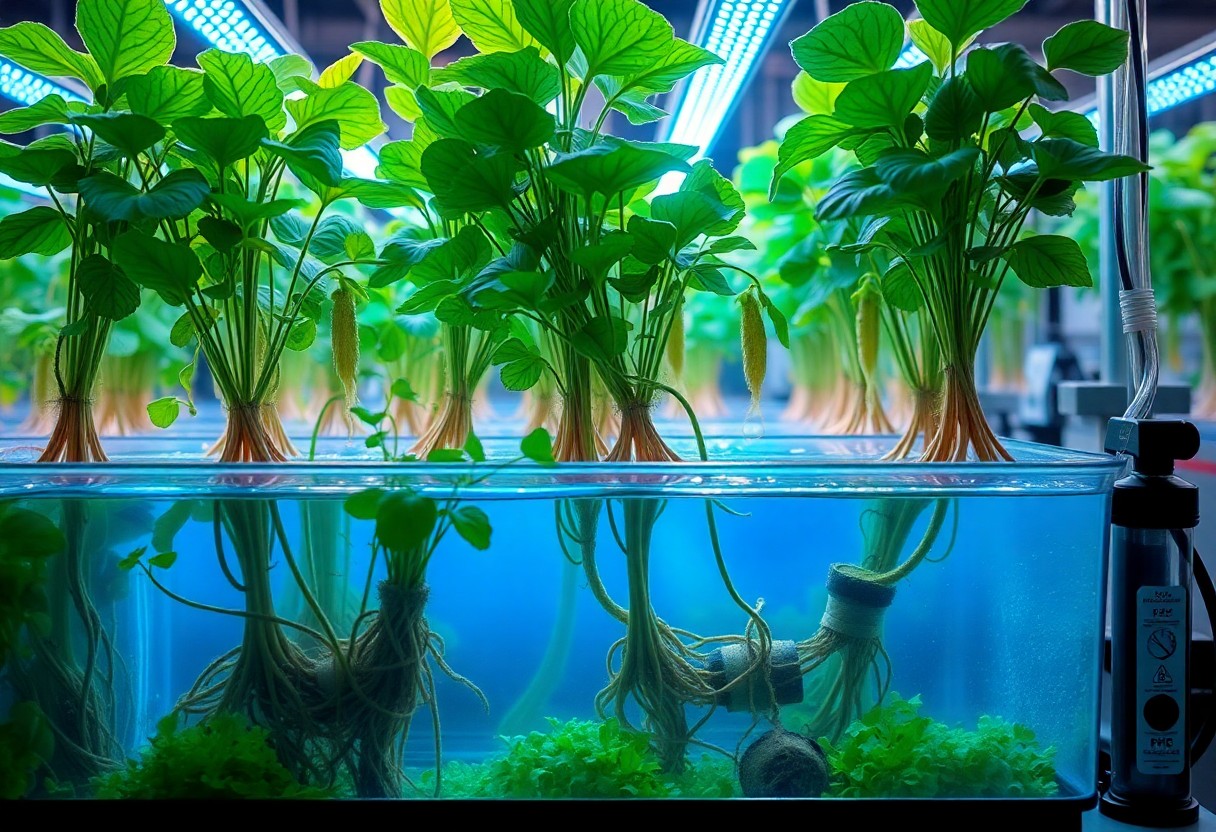
The Algae Conundrum: Why It Happens in DWC Systems
The Role of Light in Algae Growth
Light availability significantly contributes to the likelihood of algae growth in Deep Water Culture (DWC) systems. In a setup where the nutrient solution is exposed to light, algae can thrive, rapidly multiplying and overtaking the system. Algae require a spectrum of light, particularly wavelengths in the blue and red ranges, to photosynthesize and promote their growth. This means that if the nutrient solution is left uncovered or if there are clear containers, the conditions are ripe for algae proliferation. Many growers find that even short periods of light exposure can lead to overwhelming algae blooms.
To combat this, covering the reservoir with opaque materials or using dark containers can effectively block out light. Additionally, using reflective materials around the reservoir can help direct beneficial light towards the plants while minimizing the illumination of the nutrient solution. By controlling light exposure, growers can significantly hinder algae growth and maintain the health of their DWC systems.
Nutrient Imbalance: How It Fuels Algae Proliferation
Nutrient imbalances in DWC systems create a perfect storm for algae to flourish. Excessive nutrients, particularly nitrogen and phosphorus, act as a buffet for algae, allowing them to grow unchecked. This imbalance often arises from over-fertilization or insufficient water changes, leading to stagnation and nutrient buildup. With an overloaded nutrient solution, not only do plants struggle to absorb the necessary elements for growth, but algae find the conditions ideal for reproduction.
In a classic case study, a hobbyist experienced rampant algae growth by using a nutrient solution that was not tailored to their specific plant needs. By failing to monitor and adjust nutrient levels, they witnessed algae outgrowing their crops, severely impacting yields. Regular testing of nutrient levels and adjusting them according to plant growth stages can stave off algal competition. Lack of attention to pH levels can compound these issues, as both factors work in tandem to create an environment ripe for algae. Establishing a balanced nutrient profile along with regular water changes ensures that algae don’t flourish at the expense of hydroponic plants.
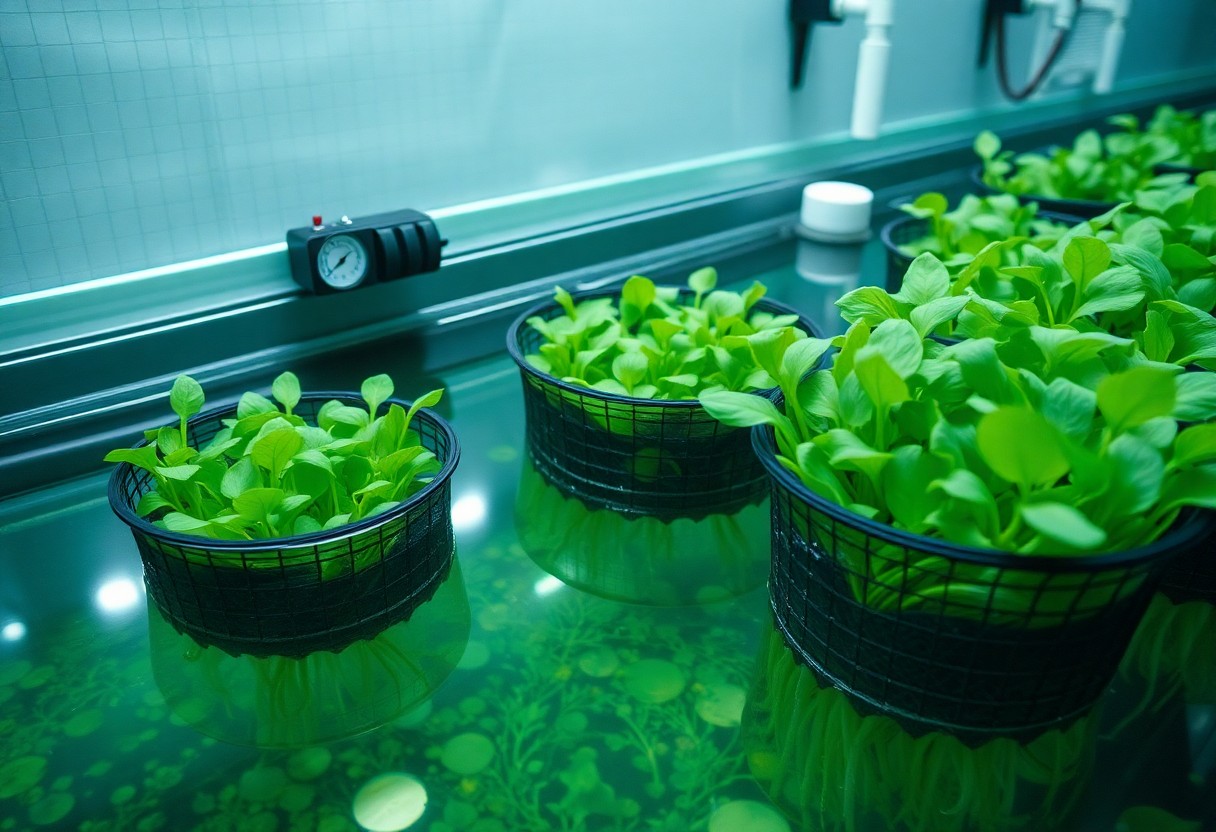
Essential Components of a Clean DWC System
Importance of Sterile Water and Nutrients
Using sterile water in a Deep Water Culture (DWC) system aids in reducing the risk of introducing pathogens that could lead to algae growth. Tap water often contains chlorine and other contaminants that can harm the beneficial microbial life necessary for plant health. He or she may opt for reverse osmosis (RO) systems or distilled water to ensure purity. Additionally, selecting nutrient solutions that are free from organic compounds can help in combating algae proliferation, as algae thrive on excess organic matter.
In DWC systems, maintaining the right balance of water quality is just as significant as the nutrients being used. Nutrient solutions, which should be monitored and adjusted based on the plants’ lifecycle, must be devoid of excess runoff that could encourage algae growth. Regularly testing and replacing the nutrient solution every two weeks helps to keep it fresh, stable, and effective.
The Role of Quality Grow Media
High-quality grow media plays a vital role in supporting plant health while simultaneously inhibiting algae growth. Using a medium designed for hydroponics, such as hydroton, Coco Coir, or rock wool, provides excellent aeration and drainage, which discourages excess moisture that can lead to algal blooms. For instance, these media types allow water to cradle plant roots while minimizing the opportunity for water stagnation—a common precursor to algae problems.
In addition, a good grow medium should support proper biological activity within the root zone. This microbial activity can compete with and suppress algae growth, leading to a balanced ecosystem. Choosing grow media that has been disinfected or treated before use prevents the introduction of spores that could later incite an algae bloom. By making informed choices about grow media, individuals can significantly enhance the overall health of their DWC systems.
The Art of Routine Maintenance
Developing a Cleaning Schedule
Creating a robust cleaning schedule can greatly enhance the health of a DWC system. A well-structured timetable specifies when certain tasks should be completed, such as nutrient solution changes, reservoir cleanings, and equipment inspections. He can choose to perform a full clean of the reservoir every two weeks, while performing minor checks weekly. By setting fixed intervals for these activities, they ensure that no step is overlooked, and the system remains in optimal condition. Additionally, understanding the specific needs of their plants can inform the frequency and depth of these maintenance tasks.
Incorporating seasonal changes into the cleaning schedule can also be beneficial. During warmer months, algae growth may accelerate, requiring more frequent cleanings or monitoring. Thus, he might decide to increase the weekly checks in summer while potentially reducing them in cooler months. By adapting their cleaning schedule to the environmental conditions, they can stave off algae and maintain a healthy growing environment for their plants.
Daily Checks: What to Look For
Conducting daily checks within a DWC system prepares growers to proactively address potential issues before they escalate. Each day, he should inspect several key factors: water temperature, nutrient levels, and any visible signs of algae or unwanted debris. Noticing drops in water temperature or ph levels can provide insight into the overall health of the system, while visually scanning for green or brown growth on surfaces can allow for immediate intervention. This consistent vigilance allows them to maintain an ecosystem that’s rich in nutrients yet devoid of harmful organisms.
Furthermore, maintaining visual and numerical records of these readings over time can help identify trends and inform future adjustments to the DWC system. Establishing a simple logbook for recording daily observations not only aids in maintaining accountability but also assists in diagnosing long-term issues. By assessing both water conditions and nutrient profiles on a daily basis, he can ensure that the plants receive the best possible environment to thrive without the interference of algae growth.
Chemical Approaches to Algae Prevention
Appropriate Algaecides for DWC
Utilizing the right algaecides in a DWC system can significantly lower the risk of algae proliferation. Products containing hydrogen peroxide are widely favored for their ability to oxidize and kill unwanted organic matter, including algae, while breaking down into harmless byproducts. Another effective option includes copper-based algaecides, which target and disrupt the cellular structures of algae, reducing their growth. However, care must be taken with copper as it can accumulate and potentially harm aquatic life if misused.
Specific formulations, such as those used in aquaponics, have been designed for safe integration without disrupting the delicate balance of nutrients in the system. Regular testing of water chemistry can facilitate the appropriate dosing of these chemicals to maintain both plant health and minimal algae issues. This approach allows he and she to manage algae while still ensuring the integrity of the desired hydroponic environment.
Pros and Cons of Chemical Treatments
| Pros | Cons |
|---|---|
| Effective at controlling algae populations quickly. | Can disrupt the balance of nutrients in the system. |
| Various options available for specific needs. | Potentially harmful to beneficial microorganisms. |
| Ease of application and availability in stores. | Risk of algae developing resistance over time. |
| Some formulas are designed for aquaponic compatibility. | Risk of toxicity if overdosed or improperly used. |
| Can reduce the frequency of cleaning needed. | Environmental concerns associated with chemical runoff. |
| Can help maintain water clarity. | May require additional water treatments post-application. |
| Provides flexibility for immediate treatment responses. | Some users report short-term effects only. |
| Generally shows results within days. | Long-term reliance may lead to dependency. |
| Can target specific algae varieties effectively. | Price may vary depending on the product and quantity. |
| Options exist for both large and small-scale systems. | May require users to improve their overall maintenance practices. |
While chemical treatments can be beneficial in managing algae growth, they shouldn’t be the only method used. Striking a balance by combining chemical treatments with traditional preventive measures such as maintaining proper light levels and a clean reservoir is vital. This multifaceted approach allows he or she to address the algae issue thoroughly while safeguarding the health of plants within the DWC system, ultimately leading to better yield potential.
Natural Remedies: Eco-Friendly Algae Solutions
Utilizing Beneficial Microorganisms
Introducing beneficial microorganisms into a DWC system can significantly reduce algae growth by enhancing the ecosystem’s overall health. These microorganisms, such as bacteria and fungi, work synergistically with plants, breaking down organic matter and outcompeting algae for nutrients. For example, adding products containing beneficial bacteria like Bacillus subtilis can help create a biodiverse environment where algae struggle to thrive. Scientific studies have shown that these microorganisms can decrease algae prevalence by up to 50% in hydroponic systems.
Regular inoculation of these beneficial microbes ensures their active presence in the nutrient solution. As they multiply, they not only consume organic waste but also contribute to the nutrient availability for the plants. This biological control method creates a balanced ecosystem, making algae growth less likely as these beneficial players actively manage conditions that favor their own survival over that of algae.
Natural Additives That Deter Algae Growth
Certain natural additives can serve to limit algae growth in DWC systems without resorting to harmful chemicals. For instance, substances like hyaluronic acid and lemon juice have been shown to inhibit the growth of various algal species. Hyaluronic acid, predominantly found in the connective tissues of animals, is often used in agriculture due to its capacity to enhance moisture retention and plant health while also creating an unfavorable environment for algae. Lemon juice introduces acidity that further disrupts algae’s ability to thrive in the nutrient solution.
Another effective natural deterrent is the use of imperative oils, such as those derived from peppermint or cinnamon. These oils possess antimicrobial properties, which help to not only reduce algae growth but also prevent other unwanted pathogens. Incorporating a few drops of these oils into the nutrient reservoir can dramatically alter the microbial landscape, promoting a healthier and cleaner hydroponic environment.

The Power of Environmental Control
Optimizing Light Exposure
Light exposure plays a vital role in the overall health of the plants in a Deep Water Culture (DWC) system. He or she should ensure that the light cycle is consistent and appropriate for the specific plants being cultivated. Photosynthetically Active Radiation (PAR) measurements are crucial to quantify the intensity of light; the ideal range typically falls between 400-700 nm of the light spectrum. Maintaining this intensity and adhering to an optimal photoperiod, usually around 18 hours of light and 6 hours of darkness for vegetative growth, can significantly hinder the proliferation of algae.
Using reflective materials in the grow area can enhance light distribution, minimizing hotspots which can encourage algae growth. In addition to adjusting the type and intensity of light, employing blackout covers during dark cycles can prevent any unintentional light leaks that may disrupt the growth cycle and lead to unwanted algae colonization.
Temperature and Humidity Management
Temperature and humidity control is crucial in ensuring a clean DWC environment. It is widely recognized that a temperature range of 65°F to 75°F (18°C to 24°C) is optimal for plant health, while the water temperature should ideally remain slightly lower, around 60°F to 70°F (15°C to 21°C). Elevated temperatures can increase the likelihood of algae blooms, especially in nutrient-rich water. Therefore, he or she should monitor both air and water temperatures regularly, using thermometers and temperature controllers where necessary.
Temperature Management Parameters
| Air Temperature | 65°F to 75°F (18°C to 24°C) |
| Water Temperature | 60°F to 70°F (15°C to 21°C) |
Humidity levels in the growing area should also be monitored closely, ideally maintained between 40% to 60%. High humidity can contribute to fungal diseases, while low humidity may encourage algae and other pests. Utilizing dehumidifiers or humidifiers will help achieve and maintain these levels, offering a balanced environment conducive to plant growth while mitigating algae risk.
Humidity Management Parameters
| Optimal Humidity Range | 40% to 60% |
Frequently Overlooked Practices
Sunlight in the Grow Space: Managing External Light Sources
She might find it surprising how much sunlight can impact a Deep Water Culture (DWC) system. Excessive light exposure not only promotes algal growth but also increases water temperatures, which can negatively affect plant roots. To minimize these risks, growers often opt to cover reservoirs with opaque materials to block light penetration. This simple action keeps roots in the dark, thereby discouraging algae proliferation while maintaining optimal root health. Using dark-colored containers is another effective strategy to limit light exposure and to ensure that any light that reaches the water is minimal.
Monitor the positioning of grow lights as well; improper placement can lead to shadowing that may cause unintentional hotspots of light within the system. Ensuring even distribution of grow lights helps control the overall temperature and light exposure, thereby promoting an environment less conducive to algae. She might also consider using reflective materials around the grow area to ensure that any incidental light does not favor the development of algae.
The Importance of Air Circulation
He must consider maintaining proper air circulation, as stagnant air can create a humid environment that fuels algae growth. Utilizing fans within the growing space improves air exchange and helps control temperature, ensuring that conditions remain unfavorable for algae. Fans should be positioned strategically to create gentle airflow across the surface of the water, which not only reduces humidity but also enhances the oxygenation of the nutrient solution, promoting healthier roots. Regular inspections for blockages or disruptions in airflow from equipment or plant foliage can further optimize this aspect.
Incorporating air stones in the DWC system can amplify the benefits of airflow. These devices increase oxygen levels, which can help bolster root health and prevent excessive build-up of algae. He should regularly check the air stones for any clogs or signs of wear, replacing or cleaning them as needed. By ensuring both environmental humidity control and proper nutrient aeration, the grow space will maintain optimal conditions for plant growth while minimizing algae risks.
Real-Life Troubleshooting: When Algae Strikes
Identifying Early Signs of Algae
Recognizing the early indicators of algae growth can save a hydroponic grower significant time and resources. Common signs include a greenish film on the water surface or visible discoloration of the nutrient solution. As algae proliferates, she may notice changes in oxygen levels, which can affect plant health. An increase in surface scum or slimes, particularly around the net pots or reservoir, also signals an emerging problem.
Monitoring the scent of the nutrient solution can provide further insight. An unpleasant smell may suggest that algae has started to decompose, leading to potential harm to the plants. Keeping a routine check on these indicators will help them intervene promptly before algae strikes a serious blow to their system.
Step-by-Step Remediation Techniques
When algae infestations occur, implementing a structured remediation plan can help restore balance in the system. Begin by isolating affected areas to prevent further spread, followed by a thorough cleaning of the reservoir with a diluted bleach solution to sanitize and kill existing spores. After that, rinsing well and refilling the system with fresh, nutrient-enriched water is imperative to replenish the environment for the plants. Controlling light exposure is also vital; switching to a darker cover on the reservoir can block sunlight, inhibiting future algae growth.
Next, she should employ physical removal techniques by skimming or siphoning off algae mats from the surface, using fine mesh or a fish net for efficient collection. Additionally, introducing beneficial microbes or enzymes designed to outcompete algae can be a natural way to restore balance. Monitoring environmental factors such as temperature, pH levels, and nutrient concentration will help ensure that the system remains inhospitable to algae.
Step-by-Step Remediation Techniques
| Action | Description |
| Isolate Affected Areas | Remove parts of the system that show algal growth. |
| Sanitize Reservoir | Use a diluted bleach solution to eliminate algae. |
| Refill System | Fill with fresh nutrient solution to replace lost nutrients. |
| Control Light Exposure | Cover reservoir to block light, minimizing algae growth potential. |
| Physical Removal | Skim off any visible algae using nets or fine mesh. |
| Introduce Beneficial Microbes | Use products that promote microbial growth that outcompetes algae. |
In addition to these steps, adjusting operational practices can significantly reduce future algae issues. Maintaining water temperatures between 65°F and 75°F helps create an environment that favors robust plant growth while inhibiting algae proliferation. Regular monitoring of nutrient levels is also critical; an over-fertilized system can lead to increased algae growth due to the excess nutrients. Implementing these techniques not only addresses existing algae problems but also sets up a sustainable foundation for your DWC system to thrive without recurrent algae challenges.
Additional Adjustments for Algae Prevention
| Action | Description |
| Maintain Optimal Temperatures | Water temperatures between 65°F and 75°F help inhibit algae. |
| Monitor Nutrient Levels | Avoid over-fertilization to minimize excessive nutrient availability for algae. |
Conclusion
Hence, maintaining a clean and algae-free Deep Water Culture (DWC) system is imperative for ensuring optimal plant growth and health. He or she should regularly monitor nutrient levels, adjust pH, and perform routine maintenance tasks such as cleaning the reservoir and components. By incorporating preventive measures like using opaque containers, appropriate water circulation, and beneficial microorganisms, they can effectively diminish the chances of algae development. Regular inspections will help identify any early signs of contamination, allowing for prompt action to be taken before it escalates into a more significant issue.
Moreover, she or he should stay informed about the best practices and innovations in hydroponic systems, as these can aid in enhancing the efficiency of algae control strategies. Incorporating methods such as UV sterilization and proper aeration can also play a significant role in creating an environment inhospitable to algae. By adopting a comprehensive and proactive approach to DWC system maintenance, growers can create optimal conditions for their plants while avoiding the complications associated with algae growth.
FAQ
Q: What is a DWC system?
A: A Deep Water Culture (DWC) system is a hydroponic growing method where plant roots are submerged in oxygenated nutrient-rich water. This system allows plants to absorb oxygen and nutrients directly from the water, promoting rapid growth.
Q: Why is it important to keep a DWC system clean?
A: Maintaining cleanliness in a DWC system is imperative to prevent harmful pathogens, algae growth, and nutrient imbalances. A clean system ensures that plants receive the optimal conditions for growing, which leads to healthier plants and better yields.
Q: What causes algae growth in a DWC system?
A: Algae thrives in bright, nutrient-rich environments. In a DWC system, algae can grow due to excessive light exposure, high nutrient levels, and warm temperatures. Algae can compete with plants for nutrients and can produce toxins that may harm plant health.
Q: How can I prevent algae growth in my DWC system?
A: To prevent algae growth, keep the reservoir covered to block light, maintain water temperature between 18-22°C (65-72°F), and ensure appropriate nutrient levels. Using a dark-colored reservoir can also help minimize light exposure and inhibit algae growth.
Q: What cleaning methods can be used for a DWC system?
A: Regularly clean the system by draining the reservoir and rinsing it with warm water. For more thorough disinfection, use a diluted solution of hydrogen peroxide or vinegar. Always rinse the system well to remove any residues before refilling it with nutrient solution.
Q: How often should I check and clean my DWC system?
A: Routine checks for cleanliness and algae presence should be performed every 1-2 weeks. If algae is observed or if the nutrient solution appears murky, immediate cleaning and disinfection are recommended to maintain a healthy growing environment.
Q: Is there any equipment that can help keep my DWC system clean?
A: Yes, you can use air stones or air pumps to enhance oxygenation in the water, which helps prevent algae growth. Additionally, UV sterilizers can be installed to eliminate pathogens and algae. Regularly monitoring pH and nutrient levels with appropriate meters can also help maintain a clean DWC environment.

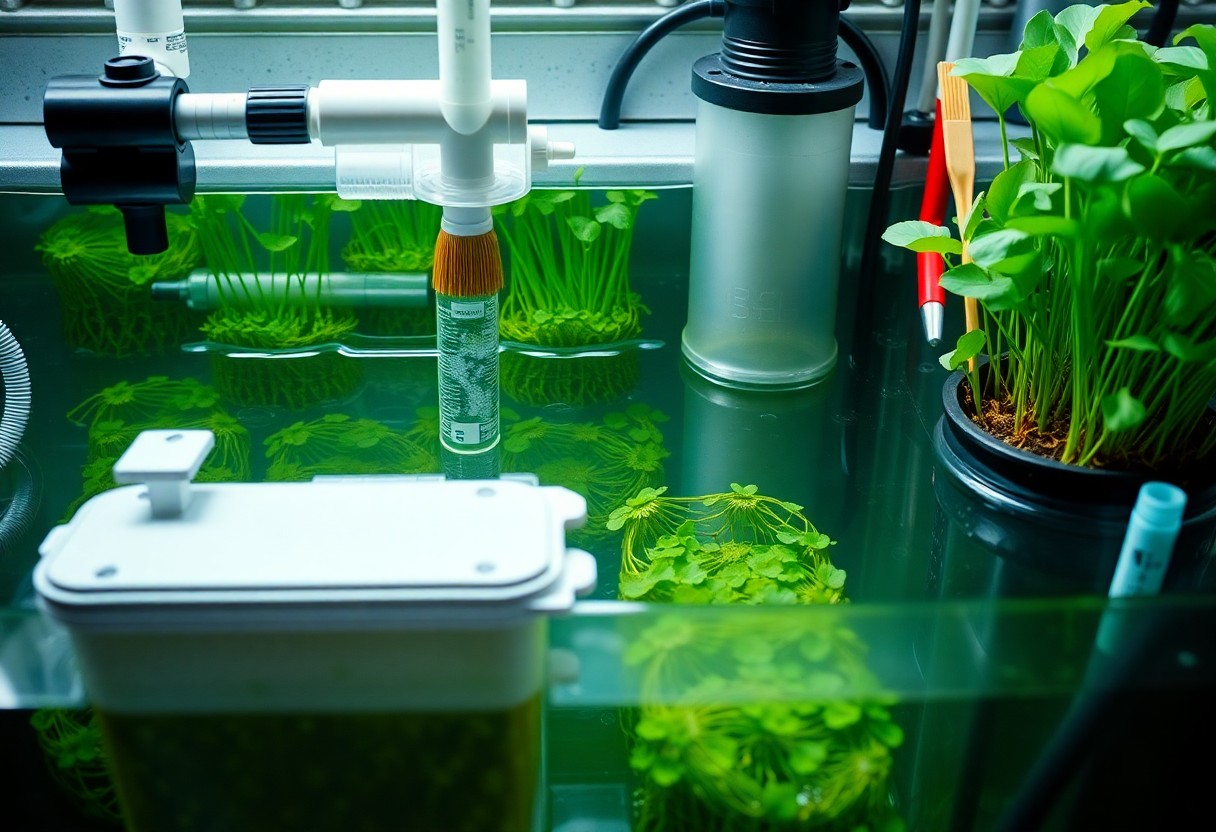
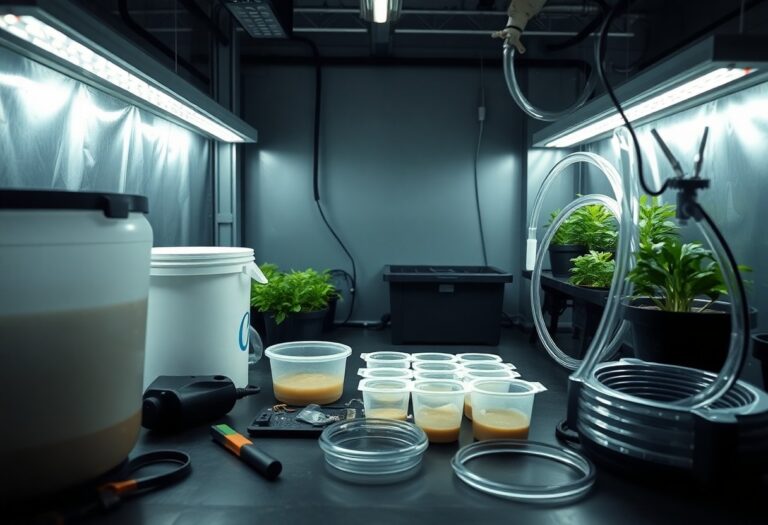

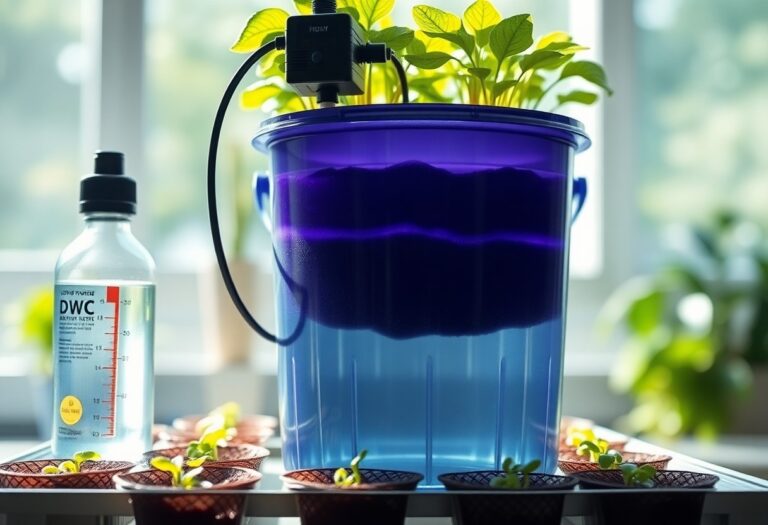
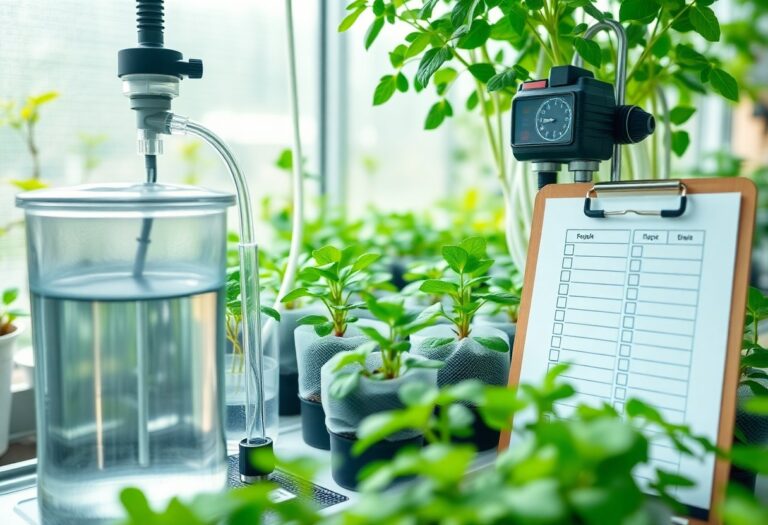
Leave a Comment